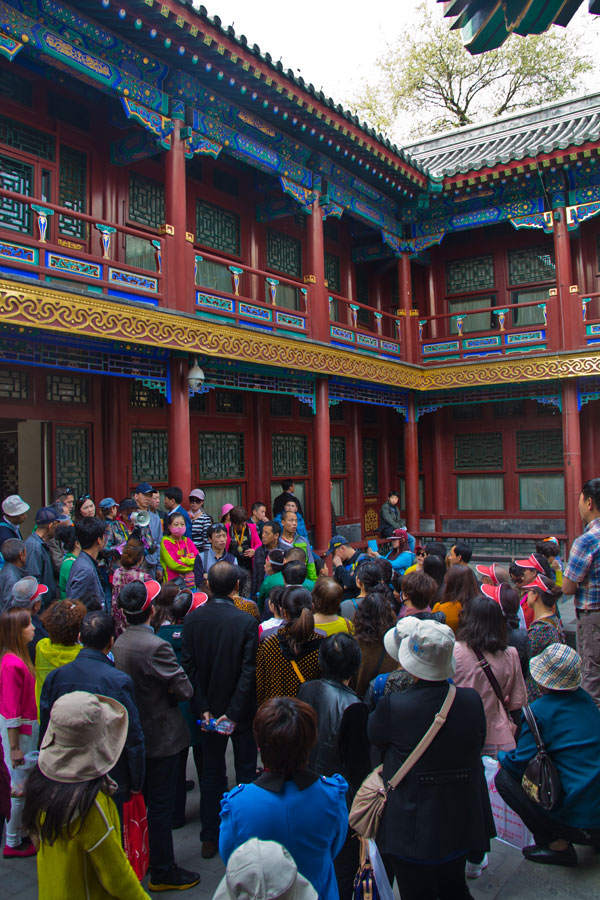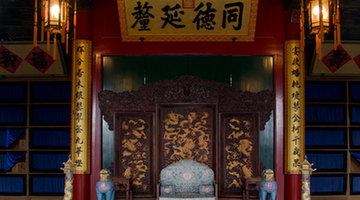Visitors flock to house of China's most corrupt official
- By William Wang
 0 Comment(s)
0 Comment(s) Print
Print E-mail CRI, April 17, 2014
E-mail CRI, April 17, 2014
A group of tourists strain to hear their guide describe the scandalous history of Prince Gong's Mansion, which was originally built by a man singularly named Heshen, who holds the dubious title of most corrupt official in Chinese history. The photo was taken on April 11, 2014, in Beijing. [Photo: CRIENGLISH.com/William Wang]
President Xi Jinping last year stated that China must "punish every corrupt official and constantly eradicate the soil which breeds corruption." But the soil which breeds corruption has been lying around for centuries, some of its finest on display at Prince Gong's Mansion.
The man singularly named Heshen holds the dubious title of most corrupt official in Chinese history, and today the meticulous mansion he built stands as a proud monument and tourist attraction.
Just a gold coin's throw from Houhai Lake, the mansion is hugely popular with tourist groups, although most other people would give it a miss. Tour groups with their mic'd guides and team color hats get the grounds so packed that even the roomy garden has an air of claustrophobia.
But a tour group may be necessary if you want to glean as much as you can out of the destination. Signage or information at the mansion is minimal, but in fact, there are oodles of juicy history that has played out on the premises.
Heshen was a talented and multilingual student who gained the favor of the Qianlong Emperor, in part because the emperor believed Heshen was the reincarnation of a concubine for whose death he felt responsible.
When Heshen realized how secure his position was, he began openly using and abusing his power, stealing and extorting public funds, even in times of famine. Before his demise, the man managed to amass 3000 rooms in various homes, 42 bank branches, and a modest 600 women in his harem.
After Qianlong's death, Heshen was finally able to be arrested, and was quickly sentenced to "death by a thousand cuts." Death in this sadistic manner offered just one perk: the possibility of a taste of opium (to prevent you from passing out). But in the end, the gracious Jiaqing Emperor ordered Heshen to hang himself in his room.
From there, the drama lessens, as the mansion was eventually passed down to Prince Gong. It later became a Catholic university. The building was even mundanely used by the Beijing Air Conditioning Factory for a time.
Since 1982, the restored mansion became a tourist destination, an ornate example of a Qing Dynasty residence. But truthfully, if you've already gone to the Forbidden City (or any of a multitude of Qing Dynasty sites), there won't be much additional draw at Prince Gong's place. True, the 28,000-square-meter garden at the back is pleasantly orchestrated. At the right moment of the season, flowers bust out in full. But anyone looking for tranquility in the garden will find that it usually drowns beneath the tour groups trying to keep up with their guides' waving flags.
Getting There: From subway Line 6's Beihai North station exit B, walk north to Qianhai West Rd and go left 100 meters.
Cost: 40 yuan






Go to Forum >>0 Comment(s)